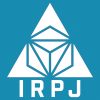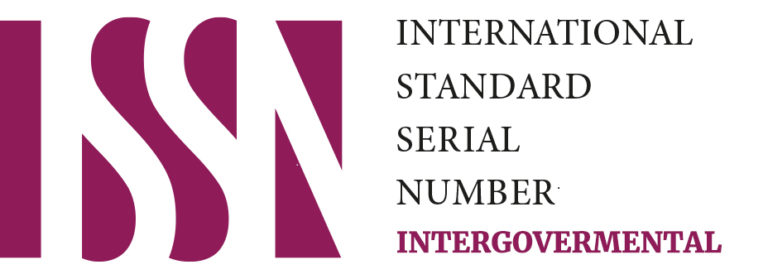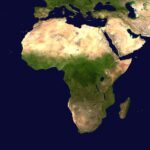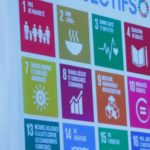ABSTRACT
Globally, the physical, social, and economic ramifications of the COVID-19 pandemic are overt and palpable. For healthcare workers (HCWs) and health systems, psychological corollaries may pose a more insidious threat.
The approximately 9500 HCWs in the Trinidad and Tobago ( T&T) public heath sector were tasked with the job of flattening the epidemic curve. Responsibilities included direct diagnosis, treatment, and care of COVID-19 infected patients. Amid constant fear of contagion, absolute shortages in number, and disrupted social contexts, HCWs peservered.
However, sustained performance in agitated health, socioeconomic, and cultural systems will unquestionably result in psychological impacts. Furthermore, as pandemic conditions progress, occupational burnout may manifest due to prolonged exposure to stressful conditions.
The main objective of this study was to identify the prevalence of clinically significant levels of anxiety, depression, and generalized psychological distress among public HCWs in T&T.
Additionally, this study assessed occupational burnout by investigating emotional exhaustion (EE), depersonalization (DP), and personal accomplishment (PA) within the population.
Internationally, early studies regarding the psychological impact of the COVID-19 have revealed a significant prevalence of depression, anxiety, and distress among HCWs. To date, one investigative study has been formally conducted in T&T to characterize the psychopathological impact of COVID-19 on HCWs. That study, by Nayak et al[1], was performed in May and June 2020, when 130 positive COVID-19 cases, with 8 deaths were recorded in the islands. Results indictated high levels of anxiety, stress, and depression among HCWs.
Psychopathology is known to be affected by time, environmental, and occupational stressors. Currently, in July 15, 2022, the recorded caseload is 169, 028 with 4,036 deaths.[2]
Therefore, this study was vital to provide a contemporary assessment of the prevalence of anxiety, depression and generalized psychological distress among HCWs resulting from the evolving pandemic.
Thus, this study makes a significant contribution to existing knowledge by providing an evaluation of current psychopathological morbidity among HCWs.
An additional contribution to knowledge takes the form of the assessment of occupational burnout due to longstanding exposure to pandemic conditions, as well as the effect of institutional factors on occupational dysfunction, and religion/spirituality on psychological morbidity.
Convenience snowball sampling was used to engage 400 HCWs of the South West Regional Health Authority (SWRHA). In a mixed methods approach, with a concurrent nested design, data were collected from self reported surveys including a researcher designed survey, the Symptom Checklist 90-R (SCL-90-R), and the Maslach Burnout Inventory for Medical Personnel (MBI-HSS MP).
Results revealed that, at this stage of the pandemic, HCWs in T&T are demonstrating low levels of anxiety (5%), depression (8%) and generalized psychological distress (10%), representing low levels of psychopathology. However, a high prevalence of moderate/severe EE (78%), moderate/severe DP (77%) and low PA (100%) was identified in the population, which may represent occupational burnout.
Notably, cohorts of HCWs who demonstrated severe EE in this study are similar to those of Nayak et al. who demonstrated high levels of anxiety and depression, namely among females, frontline workers, and medical doctors.[3]
This study was indispensable in identifying the current psychological status of HCWs, establishing the prevalence of occupational burnout, and classifying vulnerable subgroups. Henceforth, successful interventions must aim to reduce the current occupational distress and burnout among the entire HCW population, and further include focused interventions targeted to identified cohorts.
[1] Shivananda B. Nayak et al., “Prevalence and Factors associated with Depression, Anxiety and Stress among Healthcare Workers of Trinidad and Tobago during COVID-19 Pandemic: A Cross-sectional Study,” BMJ Open 11 (April 2021): e044397, accessed August 14, 2021, http://dx.doi.org/10.1136/bmjopen-2020-044397.
[2] Government of the Republic of Trinidad and Tobago, “COVID-19 Update -Friday 15 July, 2022,” Government of the Republic of Trinidad and Tobago Ministry of Health, accessed March 07, 2023, https://health.gov.tt/covid-19-update-friday-15th-july-2022.
[3] Shivananda B. Nayak et al., “Prevalence and Factors associated with Depression, Anxiety and Stress among Healthcare Workers of Trinidad and Tobago during COVID-19 Pandemic: A Cross-sectional Study,” BMJ Open 11 (April 2021): e044397, accessed August 14, 2021, http://dx.doi.org/10.1136/bmjopen-2020-044397.
1. Introduction
In the 21st century, globalization has facilitated the rapid spread of many infectious diseases, including the 2002-2004 severe acute respiratory syndrome (SARS) epidemic and the 2012 Middle East respiratory syndrome (MERS). In January 2020, the World Health Organization (WHO) declared a Public Health Emergency of International Concern in response to the outbreak of a novel coronavirus, 2019-nCov. The virus that caused the disease, severe acute respiratory syndrome coronavirus 2 (SARS-CoV-2), soon spread worldwide, and on March 11, 2020, the WHO acknowledged that the disease, now called COVID-19, had reached pandemic proportions.[4]
Subsequently, the COVID-19 pandemic has emerged as an extensive physical, social, and economic threat. To date, there have been 612 million reported cases of COVID-19, with 6.5 million deaths, in 210 countries and territories worldwide.[5]
The widespread effects of COVID-19 were crushing even to the most advanced health systems. The American Psychiatric Association (APA) has estimated that the adverse impacts of SARS-CoV-2 on the human psyche will be observed in nearly 50% of the population.[6] HCWs represent a particularly vulnerable group within the general population, and the ensuing psychological impacts may endure long after the pandemic is brought under control.
The twin-island Republic of T&T is the most southerly island in the Caribbean, designated as a Small Island Developing State (SIDS) by the United Nations. Together, the islands hold a population of 1.4 million.
On March 12, 2020, the Ministry of Health of T&T confirmed the country’s first COVID-19 case. From midnight March 29, 2020, the government of the Republic of T&T issued a “Stay at Home Order” in effect until April 15, 2020. This Order did not apply to HCWs who were categorized as essential workers. As part of a cross-disciplinary “all-of-government” approach, the Ministry of Health issued further evidence-based decisions and guidelines.
The earliest containment strategy was a parallel healthcare system (PHCS)[7] implemented in March 2020, which catered strictly to COVID-19 positive cases, independent of the dedicated health facilities that continued to provide healthcare to the general public. The Couva Hospital and Caura Hospital were the primary treatment centers within this PHCS, while the Arima Hospital, Point Fortin Hospital, and Augustus Long Hospital served as additional treatment centers.
HCWs of dedicated public facilities were reassigned from the existing public health facilities to staff the PHCS. Nayak et al. noted that the radical reshuffling, along with new departmental protocols, could impact psychological well-being.[8]
On 30 March, 2021, T&T received its first shipment of vaccines, AstraZeneca/Oxford, through the COVAX facility. Public HCWs were tasked with the provision of COVID-19 vaccination services. On December 17, 2021, the government announced that unvaccinated public sector workers were either to get vaccinated by January 14, 2022, or stay at home without pay. This was followed by an extension of the ultimatum to February 17, 2022. However, by March 2022 the government declared that since over 50 percent of the population had been fully vaccinated, the vaccine mandate no longer applied to public sector workers.
In the English Midlands region of the United Kingdom, Nyashanu, Pfende, and Ekpenyong found that changing guidelines regarding operational procedures created doubt among HCWs, and triggered anxiety, with most reporting persistent and uncertainty about their safety.[9]
It is imperative that HCWs view their workplaces as safe and supportive, or occupational stress, job dissatisfaction, and poor performance may ensue. In a scoping review, Shaukat, Mansoor, and Razzak identified several risk factors for physical and mental impacts of COVID-19, including long working hours, working in a high-risk department, lack of PPE, prolonged use of PPE leading to skin damage, and improper infection control.[10]
Furthermore, the emergence of COVID-19 did not mean there was a disappearance of other diseases. In T&T, while non communicable diseases (NCDs) remain the largest burden of disease from the age of 5, mental, neurological, substance use disorders and suicide (MNSS) accounts for the more than a quarter of the burden of disease between the ages of 10 and 40.[11] The onslaught of the coronavirus pandemic was not accompanied by the retreat of chronic diseases and MNSS.
As the pandemic waned, in March 2022, the T&T government perceived that COVID-19 was transitioning from a pandemic to an endemic phase, and announced the gradual decommissioning of the PHCS[12] and return to normal working hours with full services at all public health institutions.
With human resources already stretched, the same group of HCWs had to handle the inescapable deluge of outstanding procedures, diagnostic tests, and outstanding vaccinations for other diseases that followed.
In view of the evolving healthcare landscape, the effects of these dynamic working conditions on psychological health must be considered. Moreover, HCWs do not experience the pandemic only at work. Pandemic-related mental health disorders should therefore be evaluated with knowledge of the effects of modulating variables on outcomes to obtain a comprehensive understanding.
2. Materials and Methods
2.1. Study Design and Instrumentation
The researcher utilized a mixed methods approach with a concurrent nested design, guided by the use of self-reported surveys: the Introductory Information and Demographic Form, the SCL-90-R and the MBI-HSS MP.
Introductory Information and Demographic Form
In this survey, socio-demographic data were reported including sex, age, occupation, marital status, number of children and mental comorbidities. Data related to religious proclivity and the working environment were also collected.
SCL-90-R
Psychopathological symptoms were evaluated using the SCL-90-R. This instrument is used to determine the number of psychological symptoms experienced by the participant during the week past, in order to define symptoms of psychopathology.
It includes 80 items subdivided into 10 dimensions. For this study anxiety, depression, and generalized psychological distress were the focus. Each dimension is associated with specific questions from the checklist. Respondents are asked to indicate how frequently they were bothered by an item in the past week on a 5-point Likert scale ranging from 0 (not at all) to 4 (extremely). A score for each dimension is calculated from the mean of the responses to those questions. The t score is calculated and compared to the published normative t scores, in this case for adult non patients.[13] T scores above the published norm for each dimension were considered as clinically significant, and representative of a positive clinical case.
MBI-HSS MP
The MBI-HSS MP was used to evaluate occupational burnout. The survey consists of 22 questions, asking participants to indicate how frequently each statement applies to them on a seven-point Likert scale ranging from 0 (never) to 6 (everyday). Three component scales are assessed from the sum of the answers to specific questions. These subscales are EE representing emotional exhaustion at work, DP representing depersonalization and impersonal feelings towards patients, and PA, representing feelings of personal accomplishment and perceived effectiveness at work. A total burnout score is not obtained,[14] but the scores for the three dimensions are analyzed to assess the degree of burnout.
2.2. Sample
Ethical approval was received from the Bioethics Committee at SWRHA in April, 2022. A validation sub-study was conducted in May, 2022. Thus, norms and cut-off values were established within this population and results indicated comparable scoring to published and established norms.
Following this, using convenience snowball sampling, survey instruments were distributed at 4 sample sites within the SWRHA- San Fernando General Hospital (SFGH), San Fernando Teaching Hospital (SFTH), Point Fortin Hospital (PFH) (COVID-19 dedicated facility), and Augustus Long Hospital (ALH) (COVID-19 dedicated facility). 80 subjects were chosen according to job description: medical doctors, nursing professionals, health associate professionals, health management and support personnel groups, and clerical and support workers, according to the International Standard Classification of Occupations (ISCO). In addition to each completing the survey themselves, they were given 4 sets of surveys to distribute to their colleagues of the same job category, at the same location, for a total of 400 surveys.
All respondents were employed at SWRHA (SFGH, SFTH, ALH, PFH) and have been employed on or before December 31, 2018. All participants were 18 years or older, and were required to give informed consent. Respondents must either have had a permanent contract of employment, or a temporary contract for at least two years before the study date.
2.3. Statistical Analysis
Data were presented as totals and percentages, with the aid of Microsoft Excel. Point prevalence was used to assess the proportion of the population exhibiting a selected dependent variable during the testing period. Chi-square tests were appropriate since the aim is to determine if two categorical variables are independent of each other. The significance level used was 0.05. If the chi statistic obtained after testing was greater than 0.05, the variables were deemed to be independent. T tests were used to evaluate the difference between an independent categorical variable and a dependent quantitative variable.
3. Results
3.1. Demographic Profile
A final sample of 400 HCWs was surveyed with 100% response rate. The majority of the participants were female 295/400 (74%). The five job categories each represented 20% of the sample. Four representative cohorts by job location included SFGH: 150/400 (37.5%), SFTH: 100/400 (25%), AHPF: 100/400 (25%), and ALH: 50/400 (12.5%). The samples at AHPF and ALH were considered frontline 150/400 (38%).
3.2. Psychopathological Symptoms Evaluation
With regard to the prevalence of anxiety, depression, and generalized psychological distress, 18/400 (5%) of HCWs recorded clinically significant anxiety levels, 30/400 (8%) recorded clinically significant levels of depression, and 41/400 (10%) recorded clinically significant levels of generalized psychological distress.
Although the overall clinically significant anxiety, depression and generalized psychological distress scores were low, females displayed markedly higher scores relative to males. Frontline HCWs reported slightly higher scores of clinically significant anxiety, depression and generalized psychological distress compared to non-frontline HCWs. Clerical and support staff recorded the highest relative proportion of those with clinically significant levels of anxiety, depression and generalized psychological distress.
3.3. Occupational Burnout Evaluation
A total of 312/400 (78%) of HCWs reported moderate/high levels of EE with 147/400 (37%) recording high levels of EE and 165/400 (41%) recording moderate levels of EE.
A total of 309/400 (77%) of HCWs reported moderate/high levels of DP with 196/400 (49%) recording high levels of DP and 113/400 (28%) recording moderate levels of DP. All HCWs 400/400 (100%) reported low levels of PA.
In the sample, 82/150 (55%) of frontline HCWs and 65/250 (26%) of non-frontline HCWs reported a moderate/high degree of EE. A statistically significant association was identified between being a frontline worker and the severity of EE.
More females 288/295 (87%) reported moderate and high severity of EE as compared to males 68/105 (65%). A statistically significant association was identified between being a female HCW and the severity of EE. Similarily, more females, 171/295 (58%) of females, recorded a high degree of DP compared to 23% (24/105) of males. A statistically significant association was identified between being a female HCW and the severity of DP.
Medical doctors reported markedly higher scores for high EE, 62/80 (78%). Management and support personnel reported the relatively lowest scores of EE severity 74% (59/80) with 0/80 (0%) reporting a high degree of EE. A statistically significant association was identified between job category and the severity of EE. Scores of high DP were noted among medical doctors 60/80 (75%), nursing professionals 50/80 (63%) and allied health professionals 49/80 (61%). Only 1/80 (1%) of management and support personnel recorded a score of high DP. A statistically significant association was identified between job category and the severity of DP.
3.4. Modulating Variables
A total of 236/400 (59%) of respondents were reassigned during the pandemic, mainly medical doctors 56/80 (70%), nursing professionals 64/80 (80%,) and allied health professionals 60/80 (75%) compared with 12/80 (15%) of management and support staff.
The majority of the sample 296/400 (74%) felt pressured to get the vaccine due to the working environment.
No (0%) medical doctors, nursing professionals and allied health professionals felt that they were provided with safe working environments, compared to 62% of management and support staff and 26% of clerical and support staff.
Regarding adequate staffing, 63% of management and support staff indicated that they had adequate staffing, with 0% of the four remaining job categories staff feeling similarly.
All medical doctors, nursing professionals and allied health professionals (100%) reported less motivation to perform their duties since the onset of the pandemic, while 50% of clerical and support staff and 65% of management and support staff felt no different than before. No respondent indicated more motivation to work than before.
Of the total sample, the majority 288/400 (72%) considered they were moderately/slightly religious, 30/400 (8%) very religious, and 85/400 (21%) not at all religious. HCWs who considered themselves very religious/spiritual displayed the lowest relative scores of anxiety, depression and generalized psychological distress.
4. Discussion
This study aimed to investigate the current psychopathological impact of the COVID-19 pandemic on HCWs in T&T by exploring the prevalence of clinically significant levels of anxiety, depression, and generalized psychological distress. Furthermore, the study sought to assess occupational burnout, as well ad the effect of modulating variables, namely, religion/spirituality and institutional factors on psychological outcomes.
The available body of literature has suggested that there is a negative correlation between COVID-19 and mental health status.[15],[16],[17],[18]A local study by Nayak et al. conducted in May/June 2020 determined that 56.2 percent of HCWs experienced anxiety, and 42.28 percent experienced depression[19] mirroring multiple similar studies conducted at that time globally.
The findings of this study, conducted in July, 2022, 2.5 years after the pandemic began, has revealed low levels of clinically significant anxiety (5%), depression (8%) and generalized psychological distress (10%) within the HCW population. However, the study revealed a high prevalence of moderate/high levels of EE and DP, 78 and 77 percent respectively, and widespread low PA, 100 percent, which may represent a high prevalence of occupational burnout.
Notably, the predisposing factors for subjects demonstrating severe EE are similar to those of Nayak et al., namely females, frontline workers, and medical doctors.
Although the overall clinically significant anxiety, depression and generalized psychological distress scores were low, females displayed significantly higher scores compared to males. The majority of females, 87% (288/295), reported moderate and high EE, and high DP.
In 2020, in T&T Nayak et al. identified the female sex as demonstrating high levels of anxiety, stress, and depression.[20] A similar observation was made here in 2022, though on a smaller scale. The majority of clerical and nursing staff were recorded as female, and clerical officers, followed by nurses, recorded the highest relative anxiety, depression and generalized psychological distress scores.
Gender inequalities may explain the disproportional psychological effect on women who are essentially dealing with the same psychological, economic, and social upheaval as men, facing occupational stressors and caring for the family and home at the same time. High EE and DP scores may reflect the expectation and responsibility placed on women to keep the living and working environment clean, and free of infection for themselves, and for others.
In their investigation, Collantini et al. determined that females reported higher psychopathological symptoms than males, reporting increased anxiety, depression, and distress scores especially with regard to pandemic-related fears and concerns about infecting others while performing their traditional role as caregivers. They maintained that this was likely due to established sex differences, and the increased susceptibility of women to the negative psychological consequences of COVID-19.[21]
In this study, 236 (59%) of respondents were reassigned, many to the frontline. FHCWs reported proportionally similar overall scores of clinically significant anxiety, depression and generalized psychological distress compared to NFHCWs, 10% and 11% respectively, and no statistically significant association was observed regarding generalized psychological distress with respect to line of work. While the assumption is often that FHCWs are at an increased risk of psychological fallout, feelings of resentment, vulnerability and situational uncertainty may contribute to the comparable levels of generalized psychological distress in NFHCWs. Giusti et al. underscored that NFHCWs are at risk for increased stress due to reduced access to formal psychological support and medical information and less intensive training on personal protective equipment, biosecurity, and infection control measures.[22]
While the percentages of moderate/severe EE were noted to be high in both cohorts, 73% in NFHCWs and 87% in FHCWs, the relative proportion of FHCWs workers expressing severe EE was greater at 55%, compared to 26% of NFHCWs.
Giusti et al. pointed out that the high prevalence of COVID-19 in Northern Italy resulted in a national reorganization of the hospital network causing sudden changes in the personal and professional lives of HCWs.[23] In T&T, the PHCS would have undoubtedly caused similar changes as new facilities targeted at various levels of disease severity were established. Existing public HCWs were redeployed with short notice to unknown working conditions. Frontline staff were faced with a unique challenge, likely resulting, over time, in high levels of EE.
In this study medical doctors, nursing professionals and allied health professionals reported the highest scores of severe EE and DP, with medical doctors particularly recording the highest scores for severe EE and severe DP. According to Rao et al., many physicians expressed that the emotional challenges of caring for patients with PPE and hospital isolation policies were exacerbated by the concern of witnessing systemic healthcare disparities revealed during the COVID-19 pandemic.[24] At this time in T&T, this seems to be translating to high levels of EE and DP.
Medical doctors have faced substantial ethical challenges during the pandemic, including rationing of care and resources, which unavoidably resulted in the death. This is in direct opposition to the original Hippocratic oath ‘first, do no harm.’ As a result, they may suffer moral injury leading to professional burnout, and secondary trauma. Even in perceived unsafe working environments, and lack of support, medical doctors continued to perform their duties, likely due to work ethic and moral courage. Though admirable, moral courage puts the mental health of HCWs at risk since these workers may experience moral distress in situations where it was impossible to act according to their moral values.
Lee et al. hypothesized that HCWs would face mental health issues during the COVID-19 pandemic related to how hazardous they perceive their workplaces.[25] The perception of unsafe working environments over time may also have contributed to the high levels of EE and DP in medical doctors, nursing professionals and allied health professionals. No (0%) medical doctors, nursing professionals, or allied health professionals felt that a safe working environment, and adequate staffing was provided, while all (100%) reported they felt pressure to get the vaccine because of the nature of their work. Consequently, it can be surmised that the majority of nursing professionals, allied health professionals and medical doctors perceived their working environment to be less than ideal in terms of safety, staffing and support. Management, on the other hand, expressed the opposite. A statistically significant association (p value 0.00) was identified between job category and the severity of DP.
In Ghana, Ofori et al. highlighted that differences in psychological reactions between countries could stem from cultural differences in expression of anxiety and depression, as well as optimism grounded in religion.[26] T&T enjoys a diverse culture and religious pluralism. It is widely known that even in the wake of numerous restrictions, some religious and social activities continued, thus potentially tempering the negative effects of the pandemic. In this study, HCWs who considered themselves very religious/spiritual displayed the lowest relative scores of anxiety, depression, and generalized psychological distress. Furthermore, a statistically significant association was identified between religious proclivity and the severity of DP, with HCWs who are moderately religious/spiritual displaying lower levels of DP.
Feeling of personal accomplishment can act as a protective factor against psychological distress and occupational burnout. Reduced levels of PA denote decreased self-worth, perceived lack of ability to perform duties, and low professional self-esteem. Increased levels of PA can modulate EE and DP positively and thus directly affect burnout levels.
In this study, all of the HCWs surveyed recorded a low degree of PA. All (100%) nursing professionals, allied health professionals, and medical doctors, and 50% of clerical staff reported less motivation to work than before the pandemic. No one reported more motivation to perform their duties than before.
When asked to provide optional comments, it was noted that poor job morale, widespread demotivation, and feelings of neglect and resentment are pervasive.
HCWs felt that they were being viewed as ‘a means to an end’ with little regard for their individual needs. Additionally, they felt that only medical doctors were viewed as ‘important enough’ to be given full PPE, time off, and flexible scheduling. There were universal expressions among nursing and allied health staff that management was uncaring, and blind to the needs of the staff who were facing direct, daily threat. Additional comments by some HCWs noted discontent over the perceived mishandling of the situation by administration and management.
The results of this study suggest that occupational burnout syndrome is the relevant issue at hand. Occupational burnout is a public health issue with detrimental economic, social and personal ramifications.
The results, and recorded comments in this study have begged the question, are institutional factors to blame for the low levels of motivation and high levels of occupational burnout? Judging from the additional duties, chronic short staffing, and perceived lack of institutional support, in this case, it appears that the subjective exposure to occupational conditions is affecting HCWs more than the pandemic conditions itself, and triggering high levels of occupational burnout.
5. Conclusion and Recommendations
What can be concluded in this population, after more than 2 years of the pandemic, is a markedly psychologically resilient workforce, with low levels of clinically significant psychopathology, but high levels of occupational burnout in the face of institutional constraints. This can be a dangerous cocktail, resulting in low system performance, and derailment of future responses to health threats.
It is hoped that the results of this research can inform future efforts targeting recovery from occupational burnout, as well as the maintenance of psychological wellbeing amongst HCWs. In this aspect, an informed, coordinated, interdisciplinary approach will be necessary to provide holistic and effective therapeutic interventions.
Specifically addressing these issues will unquestionably need input from disciplines other than the traditional field of psychology. The perceived lack of institutional support, unsafe working conditions, and inadequate staffing must be addressed at its core. Executive administration and management have a role to play in this aspect, since pre-existing management/staff issues may have been exacerbated by the pandemic situation, and must be dealt with if a physically healthy and psychologically strong workforce is to be achieved.
Recommendations to boost psychological well being and job satisfaction include continuous education, development of leadership and communication skills, the promotion of teamwork, positive thinking exercises, coping strategies, adequate time off, and flexible work schedules. Such programs and opportunities should be made available to all HCWs by their employer, without prejudice.
HCWs are unique individuals who have chosen to dedicate their lives to helping others. In the execution of their duties during the pandemic they are placing their lives, and by extension the lives of their loved ones, at risk. In the face of direct and vicarious threat, psychological fallout is inevitable. Therefore, healthcare leadership must remain cognizant of this, and be willing to provide safe working environments, support, and flexibility in an effort to protect HCWs as much as possible from the pandemic’s negative psychological impact, enhance workers’ psychological wellbeing, and prevent occupational dysfunction.
REFERENCES AND BIBLIOGRAPHY
Choudhury, Tawfiq, Maciej Debski, Andrew Wiper, Amr Abdelrahman, Susan Wild, Shaji Chalil, Ranjit More, Grahame Goode, Billal Patel, and Hesham Abdelaziz. “COVID-19 Pandemic: Looking After the Mental Health of Our Healthcare Workers.” Journal of Occupational and Environmental Medicine 62, no.7 (July 2020): e373-e376. Accessed August 8, 2021. http://dx.doi.org/10.1097/JOM.0000000000001907.
Collantoni, Enrico et al. “Psychological Distress, Fear of COVID-19, and Resilient Coping Abilities among Healthcare Workers in a Tertiary First-Line Hospital during the Coronavirus Pandemic.” Journal of Clinical Medicine 10, no. 7 (2021): 1465. Accessed August 11, 2021. http://dx.doi.org/10.3390/jcm10071465.
Derogatis, Leonard R., R.S. Lipman, and L. Covi. “SCL-90: An outpatient psychiatric rating scale-preliminary report.” (1973). accessed May 1, 2022. https://github.com/seschneck/arc_scoring_code/raw/main/SCL90/DerogatisL1973a.pdf
Doughty, Melissa. “Covid19 in Trinidad and Tobago: A Timeline.” Newsday Newspaper. March 22, 2022. Accessed April 17, 2022. https://newsday.co.tt/2022/03/22/covid19-in-trinidad-and-tobago-a-timeline/
Echeverria, Iván, Marc Peraire, Gonzalo Haro, Rafael Mora, Isabel Camacho, Isabel Almodóvar, Vicente Mañes, Ignacio Zaera, and Ana Benito. “‘Healthcare Kamikazes’ during the COVID-19 Pandemic: Purpose in Life and Moral Courage as Mediators of Psychopathology.” International Journal of Environmental Research and Public Health 18, no.14 (2021): 7235. Accessed August 14, 2021. http://dx.doi.org/10.3390/ijerph18147235
Giusti, Emanuele Maria, Elisa Pedroli, Guido E. D’Aniello, Chiara Stramba Badiale, Giada Pietrabissa, Chiara Manna, Marco Stramba Badiale, Giuseppe Riva, Gianluca Castelnuovo, and Enrico Molinari. “The Psychological Impact of the COVID-19 Outbreak on Health Professionals: A Cross-Sectional Study.” Frontiers in Psychology 11 (July 2020):1684. Accessed August 18, 2021. http://dx.doi.org/10.3389/fpsyg.2020.01684.
Government of the Republic of Trinidad and Tobago. “COVID-19 Update -Friday 15 July, 2022.” Government of the Republic of Trinidad and Tobago Ministry of Health. Accessed March 07, 2023. https://health.gov.tt/covid-19-update-friday-15th-july-2022.
Lee, Ju K., Hyuk J. Lee, Yujin Hong, Yong W. Shin, Seockhoon Chung, and Jangho Park. “Risk Perception, Unhealthy Behavior, and Anxiety Due to Viral Epidemic Among Healthcare Workers: The Relationships with Depressive and Insomnia Symptoms During COVID-19.” PsyArXiv (October 2020). Accessed August 10, 2021. http://dx.doi.org/10.3389/fpsyt.2021.615387.
Lenzo, Vittorio, Maria C. Quattropani, Alberto Sardella, Gabriella Martino, and George A. Bonanno. “Depression, Anxiety, and Stress among Healthcare Workers during the COVID-19 Outbreak and Relationships with Expressive Flexibility and Context Sensitivity.” Frontiers in Psychology (February 2021). Accessed August 16, 2021. http://dx.doi.org/10.3389/fpsyg.2021.623033.
Maciaszek, Julian, Marta Ciulkowicz, Blazej Misiak, Dorota Szczesniak, Dorota Luc, Tomasz Wieczorek, Karolina Fila-Witecka, Pawel Gawlowski, and Joanna Rymaszewska. “Mental Health of Medical and Non-Medical Professionals during the Peak of the COVID-19 Pandemic: A Cross-Sectional Nationwide Study.” Journal of Clinical Medicine 9, no. 8 (2020): 2527. Accessed August 14, 2021. http://dx.doi.org/10.3390/jcm9082527.
Nayak, Shivananda B., Pradeep Kumar Sahu, Koomatie Ramsaroop, Shivanand Maharaj, William Mootoo, Sharaz Khan, and Rian Marie Extavour. “Prevalence and Factors associated with Depression, Anxiety and Stress among Healthcare Workers of Trinidad and Tobago during COVID-19 Pandemic: A Cross-sectional Study.” BMJ Open 11 (April 2021): e044397. Accessed August 1, 2021. http://dx.doi.org/10.1136/bmjopen-2020-044397.
Ofori, Anthony Amanfo, Joseph Osarfo, Evans Kofi Agbeno, Dominic Owusu Manu, and Elsie Amoah. “Psychological Impact of COVID-19 on Health Workers in Ghana: A Multicentre, Cross-sectional Study.” SAGE Open Medicine 9 (March 2021): 1–10. Accessed August 29, 2021. http://dx.doi.org/10.1177/20503121211000919.
Pan American Health Organization. “Mental Health Country Profile – Trinidad and Tobago.” PAHO. September 16, 2020. Accessed August 7, 2021. https://www.paho.org/en/node/73910.
Pan American Health Organization. “Weekly COVID-19 Epidemiological Update: Issue 34 (27 September 2022).” PAHO. September 27, 2020. Accessed September 28, 2020. https://iris.paho.org/handle/10665.2/56567.
Rao, Hassan, Diana Mancini, Allison Tong, Humaira Khan, Brissa Santacruz Gutierrez, William Mundo, Adriana Collings, and Lilia Cervantes. “Frontline Interdisciplinary Clinician Perspectives on Caring for Patients with COVID-19: A Qualitative Study.” BMJ Open 11 (2021): e048712. Accessed August 14, 2021. http://dx.doi.org/10.1136/bmjopen-2021-048712
Salman, Muhammad, Muhammad Husnnain Raza, Zia Ul Mustafa, Tahir Mehmood Khan, Noman Asif, Humera Tahir, Naureen Shehzadi, Khalid Hussain. “The Psychological Effects of COVID-19 on Frontline Healthcare Workers and How They are Coping: A Web-based, Cross-sectional Study from Pakistan.” MedRxiv (June 2020). Accessed August 14, 2021. http://dx.doi.org/10.1101/2020.06.03.20119867.
Shaukat, Natasha, Daniyal Mansoor Ali, and Junaid Razzak. “Physical and Mental Health Impacts of COVID-19 on Healthcare Workers: A Scoping Review.” International Journal of Emergency Medicine 13, 40 (2020). Accessed August 14, 2021. http://dx.doi.org/10.1186/s12245-020-00299-5.
Talarowska, Monika, Jan Chodkiewicz, Natalia Nawrocka, Joanna Miniszewska, and Przemysław Biliński. “Mental Health and the SARS-COV-2 Epidemic—Polish Research Study.” International Journal of Environmental Research and Public Health 17, no. 19(2020): 7015. Accessed September 24, 2021. https://doi.org/10.3390/ijerph17197015.
WHO, “Coronavirus disease (COVID-19) Pandemic-Overview. 2023. Accessed March 07, 2023. https://www.who.int/europe/emergencies/situations/covid-19.
[1] Shivananda B. Nayak et al., “Prevalence and Factors associated with Depression, Anxiety and Stress among Healthcare Workers of Trinidad and Tobago during COVID-19 Pandemic: A Cross-sectional Study,” BMJ Open 11 (April 2021): e044397, accessed August 14, 2021, http://dx.doi.org/10.1136/bmjopen-2020-044397.
[2] Government of the Republic of Trinidad and Tobago, “COVID-19 Update -Friday 15 July, 2022,” Government of the Republic of Trinidad and Tobago Ministry of Health, accessed March 07, 2023, https://health.gov.tt/covid-19-update-friday-15th-july-2022.
[3] Shivananda B. Nayak et al., “Prevalence and Factors associated with Depression, Anxiety and Stress among Healthcare Workers of Trinidad and Tobago during COVID-19 Pandemic: A Cross-sectional Study,” BMJ Open 11 (April 2021): e044397, accessed August 14, 2021, http://dx.doi.org/10.1136/bmjopen-2020-044397.
[4] WHO, “Coronavirus disease (COVID-19) pandemic-overview, 2023, accessed March 07, 2023, https://www.who.int/europe/emergencies/situations/covid-19.
[5] Pan American Health Organization, “Weekly COVID-19 Epidemiological Update: Issue 34 (27 September 2022),” PAHO, September 27, 2020, accessed September 28, 2020, https://iris.paho.org/handle/10665.2/56567.
[6] Monika Talarowska, Jan Chodkiewicz, Natalia Nawrocka, Joanna Miniszewska, and Przemysław Biliński, “Mental Health and the SARS-COV-2 Epidemic—Polish Research Study,” International Journal of Environmental Research and Public Health 17, no. 19(2020): 7015, accessed September 24, 2021, https://doi.org/10.3390/ijerph17197015.
[7] Melissa Doughty. “Covid19 in Trinidad and Tobago: A Timeline,” Newsday Newspaper, March 22, 2022, accessed April 17, 2022, https://newsday.co.tt/2022/03/22/covid19-in-trinidad-and-tobago-a-timeline/
[8] Shivananda B. Nayak et al., “Prevalence and Factors associated with Depression, Anxiety and Stress among Healthcare Workers of Trinidad and Tobago during COVID-19 Pandemic: A Cross-sectional Study,” BMJ Open 11 (April 2021): e044397, accessed August 14, 2021, http://dx.doi.org/10.1136/bmjopen-2020-044397.
[9] Julian Maciaszek et al., “Mental Health of Medical and Non-Medical Professionals during the Peak of the COVID-19 Pandemic: A Cross-Sectional Nationwide Study.”
[10] Natasha Shaukat, Daniyal Mansoor Ali, and Junaid Razzak, “Physical and Mental Health Impacts of COVID-19 on Healthcare Workers: A Scoping Review.”
[11] Pan American Health Organization, “Mental Health Country Profile – Trinidad and Tobago,” PAHO, September 16, 2020, accessed August 14, 2021, https://www.paho.org/en/node/73910.
[12] Melissa Doughty. “Covid19 in Trinidad and Tobago: A Timeline,” Newsday Newspaper, March 22, 2022, accessed April 17, 2022, https://newsday.co.tt/2022/03/22/covid19-in-trinidad-and-tobago-a-timeline/
[13] Leonard R. Derogatis, R.S. Lipman, and L. Covi, “SCL-90: An outpatient psychiatric rating scale-preliminary report,” (1973), accessed May 1, 2022, https://github.com/seschneck/arc_scoring_code/raw/main/SCL90/DerogatisL1973a.pdf.
[14] Christina Maslach et al., “Maslach Burnout Inventory™ (MBI),” Mind Garden, Inc., 2019, accessed August 10, 2021, https://www.mindgarden.com/117-maslach-burnout-inventory-mbi.
[15] Iván Echeverria et al., ““Healthcare Kamikazes” during the COVID-19 Pandemic: Purpose in Life and Moral Courage as Mediators of Psychopathology,” International Journal of Environmental Research and Public Health 18, no.14 (2021): 7235, accessed August 14 2021, http://dx.doi.org/10.3390/ijerph18147235.
[16] Muhammad Salman et al., “The Psychological Effects of COVID-19 on Frontline Healthcare Workers and How They are Coping: A Web-based, Cross-sectional Study from Pakistan,” MedRxiv (June 2020), accessed August 14, 2021, http://dx.doi.org/10.1101/2020.06.03.20119867.
[17] Vittorio Lenzo et al., “Depression, Anxiety, and Stress among Healthcare Workers During the COVID-19 Outbreak and Relationships with Expressive Flexibility and Context Sensitivity,” Frontiers in Psychology (February 2021), accessed August 14, 2021, http://dx.doi.org/10.3389/fpsyg.2021.623033.
[18] Tawfiq Choudhury et al., “COVID-19 Pandemic: Looking After the Mental Health of Our Healthcare Workers,” Journal of Occupational and Environmental Medicine 62, no.7 (July 2020): e373-e376, accessed August 14, 2021, http://dx.doi.org/10.1097/JOM.0000000000001907.
[19] Shivananda B. Nayak et al., “Prevalence and Factors associated with Depression, Anxiety and Stress among Healthcare Workers of Trinidad and Tobago during COVID-19 Pandemic: A Cross-sectional Study.”
[20] Shivananda B. Nayak et al., “Prevalence and Factors associated with Depression, Anxiety and Stress among Healthcare Workers of Trinidad and Tobago during COVID-19 Pandemic: A Cross-sectional Study.”
[21] Enrico Collantoni et al., “Psychological Distress, Fear of COVID-19, and Resilient Coping Abilities among Healthcare Workers in a Tertiary First-Line Hospital during the Coronavirus Pandemic.”
[22] Emanuele Maria Giusti et al., “The Psychological Impact of the COVID-19 Outbreak on Health Professionals: A Cross-Sectional Study.”
[23] Emanuele Maria Giusti et al., “The Psychological Impact of the COVID-19 Outbreak on Health Professionals: A Cross-Sectional Study,” Frontiers in Psychology 11 (July 2020):1684, accessed August 14, 2021, http://dx.doi.org/10.3389/fpsyg.2020.01684.
[24] Hassan Rao et al., “Frontline Interdisciplinary Clinician Perspectives on Caring for Patients with COVID-19: A Qualitative Study.”
[25] Ju K. Lee et al., “Risk Perception, Unhealthy Behavior, and Anxiety Due to Viral Epidemic Among Healthcare Workers: The Relationships with Depressive and Insomnia Symptoms During COVID-19.”
[26] Anthony Amanfo Ofori et al., “Psychological Impact of COVID-19 on Health Workers in Ghana: A Multicentre, Cross-sectional Study.”






